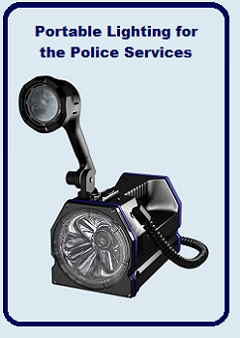Monthly Archives: January 2015
White Knight have been manufacturing rechargeable handlamps since1976 with the launch of the ‘White Knight’ range of handlamps and later the White Knight Halo Plus Personal Signalling Lamps, professional halogen torches.
 White Knight is a subsidiary of Furneaux Riddall, accompany founded in 1910 to design and install electricity plants in large country houses prior to the establishment of the National Grid. Furneaux Riddall changed its emphasis from electrical engineering to the distribution of electrical products in the marine and automotive industries and is now one of the most well-respected companies in the UK specialising in electrical products for these industries.
White Knight is a subsidiary of Furneaux Riddall, accompany founded in 1910 to design and install electricity plants in large country houses prior to the establishment of the National Grid. Furneaux Riddall changed its emphasis from electrical engineering to the distribution of electrical products in the marine and automotive industries and is now one of the most well-respected companies in the UK specialising in electrical products for these industries.
White manufactures the HP-11 range of signalling lamps for the line-side industry, with the new HP-11R3RT LED capable of over 30 hours. “Railway Bardic lamp” is now a generic term used to describe any portable signalling lamp that uses different colours. Although designed as signalling lamps, LED bardic lamps can be used as temporary headlights or tail lights on trains in an emergency, and most trains have a bracket for holding these lamps.
 The Halo Plus 2 lamp has been in production since 1990. It is used by the British, German and Swiss rail networks, as well as the Eurostar service and infrastructure companies.
The Halo Plus 2 lamp has been in production since 1990. It is used by the British, German and Swiss rail networks, as well as the Eurostar service and infrastructure companies.
Apart from the Network Rail approved signalling lamp used for train movement -shunting etc – White Knight also manufacture a sturdy range of lamps for other areas of the rail infrastructure including banksmans lamps, and other portable spotlights for long and short distance inspection work.
The National Railway Museum in York, and its sister site in Durham are both well worth a visit – even for non train lovers.
In 1862 the Science started its collection of railway artefacts by acquiring Rocket. Individual railway companies began preserving their collections since the 1900s. The
London and North Eastern Railway (LNER) opened a public railway museum in York in 1927. By the late 1930s Great Western Railway (GWR), London, Midland and Scottish Railway (LMS), London and North Eastern Railway (LNER) and Southern Railway (SR) had all acquired significant railway collections. In 1948 these collections were united, and in 1951 a curator was appointed. British Railways then opened the Museum of British Transport in Clapham and another in Swindon, was opened in conjunction with Swindon Council.
The National Railway Museum
In 1975 the National Railway Museum was opened at the former steam locomotive depot in Leeman Road in York. Only 700m from York Minster the museum was an instant success. The museum was first extended in 1975, and has undergone a number of extensions since then. In 1990 the Station Hall opened nearly doubling the size of the museum, and winning that year’s Museum of the Year Award in the process. More extensions were added and the museum won the European Museum of the Year award in 2001.
The NRM has also gained credibility as an academic and learning facility, and together with the University of York launched the Institute of Railway Studies in 1994. In June 2004 a purpose-built rail training centre – th Yorkshire Rail Academy was opened.
The new museum, Locomotion was opened in 2004 at Shildon in Durham. A joint venture with the local authority, and funded by grants from the Heritage Lottery Fund and the European Regional Development Fund.
Some of the interesting items housed in the NRM include:
- The Chinese Locomotive which is 1 foot too wide and 2 foot too high to operate on the British mainline. A lock of hair from Robert ,only son of George Stephenson, and builder of the steam locomotive Rocket
- The only Japanese Bullet Train outside Japan
- A photographic collection that includes an average of 29 photos for every day since 1850
- 300 locomotives and rolling stock
- 628 coins and medals
- 4899 pieces of railway uniform and costume, railway equipment, documents, records, artwork and railway related photographs
- A collection of Royal trains and carriages including the carriage that Queen Victoria regarded as her palace on wheels
- An art collection containing a number of works painted by important British artists including Spencer Frederick Gore, Abraham Solomon, William Powell Frith and John Piper
- The largest collection of model railway vehicles built by one man, James Peel Richards – over 610 model railway
The National Railway Museum is the most popular railway museum in the world with the largest collection of railway objects in the world it attracts over 700,000 visitors per year. It has won more than 20 prestigious awards since 1975
If you haven’t been yet then you really should visit the NRM in York or Sheldon


